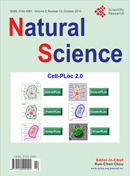 For some journals, thorough retraction notices are the rule — and, when misconduct is involved, the price authors pay for abusing the trust of the editors and the readers. Others seem to take a more casual approach. Guess which we think is best.
For some journals, thorough retraction notices are the rule — and, when misconduct is involved, the price authors pay for abusing the trust of the editors and the readers. Others seem to take a more casual approach. Guess which we think is best.
Consider the case of a group of researchers in China led by Tan Jinquan, an immune system expert at Wuhan University. Over the past two years or so, Jinquan and colleagues have lost no fewer than a half-dozen papers containing evidence of image manipulation. But, depending on the journal pulling the articles, you might not know it.
Continue reading Why retraction notices matter: Group’s repeated misuse of figures gets different play from five journals
 If you’re going to publish in the Journal of Computational Chemistry, it probably makes sense to have one’s computer tuned up for the task.
If you’re going to publish in the Journal of Computational Chemistry, it probably makes sense to have one’s computer tuned up for the task.






